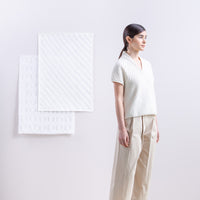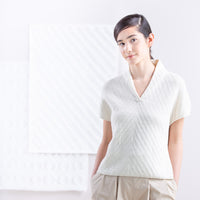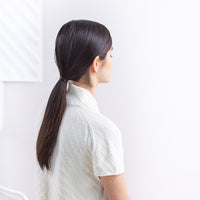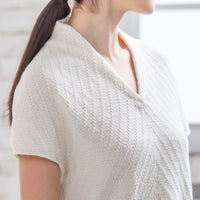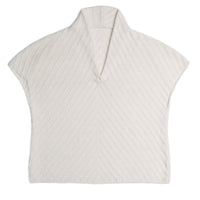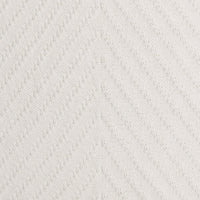Product description
Orime is a demure top designed and crafted with an eye for impeccable detail and finishing. Knit stitches arranged diagonally on a background of reverse stockinette create lines that mimic creases on pleated paper; the folded over collar and neckline facing adds a stabilizing, professional touch. Featuring textures and techniques befitting of its name, which means “fold” in Japanese, this piece encapsulates precision while remaining true to the quiet, intuitive, and tactile joy of creating by hand.
This top in Peerie is worked flat in pieces from the bottom up and seamed. There is no seam on the shoulder; the front piece wraps over to the back, where it is seamed to exaggerated sloped “shoulder” edges that are not unlike raglan armholes. The collar is folded over and sewn to the wrong side and the armhole edging is picked up and worked circularly after garment assembly. The allover textured motif is worked from charts only.
Designer: Véronik Avery
Collection: Early Fall 2018
Share
Orime
Textured Cap Sleeve Top
